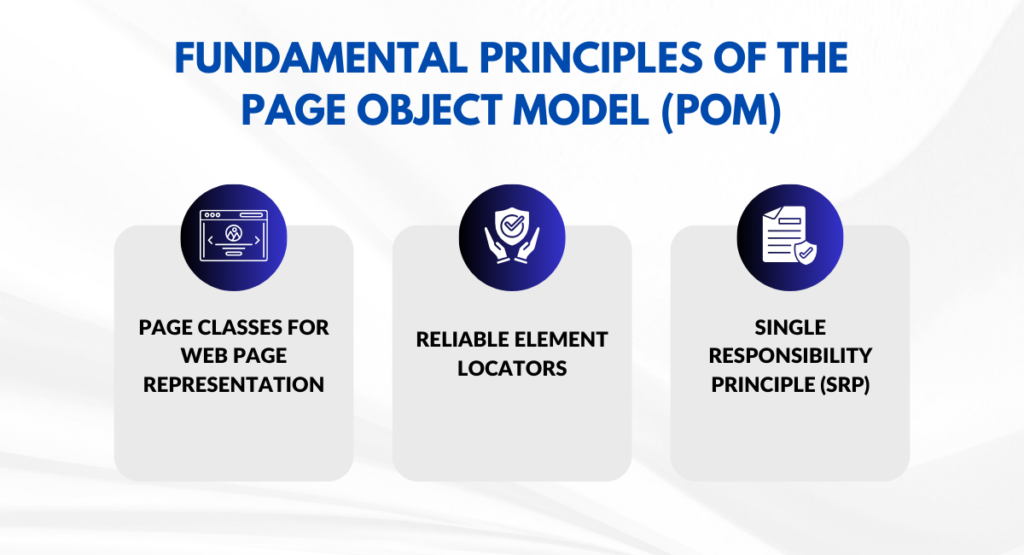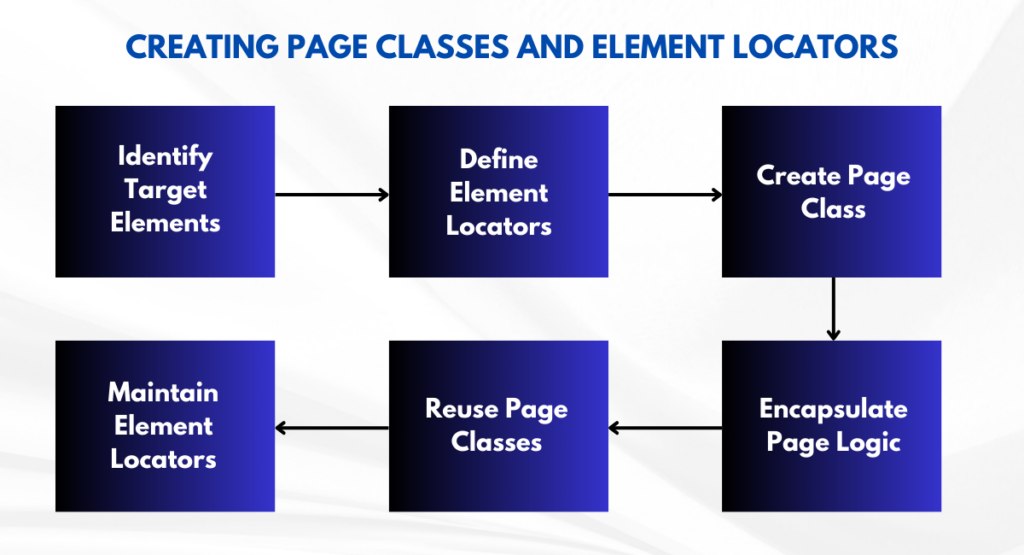As software development becomes more complicated, the requirement for effective and reliable testing automation is more crucial than ever. One of the most effective methods that have emerged to tackle this issue can be described as the Page Object Model (POM).
This article will examine the principles and concepts that comprise the Page Object Model and provide complete step-by-step instructions to assist you in enhancing your automation of tests.
It is a design pattern that focuses on the Page Object Model, which supports the idea of encapsulating the functions and the elements of a page into distinct classes.
Doing this provides a clear separation of interests. It allows for reusability, maintenance as well and scalability for your automation test code.
Understanding the Benefits of Using POM for Test Automation

Utilizing the Page Object Model for test automation has a variety of advantages.
First, it increases the reliability of your test script. By encapsulating the elements of a page and their functions into distinct classes, any changes that are made to the structure or behavior will be quickly reflected within the appropriate page class without affecting the entire test suite.
Additionally, POM enhances the reusability of your test program. Through POM, the Page Object Model, you can build an entire library of page classes that you can use for multiple test cases or even multiple projects.
This encourages the reuse of code and reduces duplication. This ultimately reduces time and energy in testing automation.
Furthermore, POM enhances the readability and comprehension of the test cases. By abstracting page elements and actions into distinct classes, your test scenarios are more detailed and easy to follow.
The test scripts are easier to maintain and more accessible even for those who aren't technical team members.
Fundamental Principles of the Page Object Model

In order to implement the Page Object Model practically, it is crucial to comprehend and apply its principles.
First, every web page must have a page class that defines the functions and elements of the page. The page class must expose ways to interact with the details of the page and perform actions with them.
Second, the pages should use element locators to locate and locate the page's elements. The element locators are vital to interacting with the details of the page. They must be carefully selected in light of their reliability and distinctiveness.
Finally, all page classes must adhere to the single responsibility Principle (SRP). Every page class should bear only one responsibility; that is to say, it is solely responsible for managing the elements and functions of a particular web page. This ensures maintenance and lowers the amount of code in the test.
Implementing the Page Object Model in Your Test Automation Framework
With a thorough understanding of the fundamentals of the Page Object Model, let's examine how to incorporate it into your test automation framework.
First, you need to design page classes for each page you wish to automate. The page classes you create should take their cues from a base class, which provides the same functions as well as utilities.
In each page class, it is essential to define ways to represent the interactions and actions of the elements on your page. The methods you choose to use should make use of element locators to identify as well as interact with components.
By encapsulating the logic of the page in the page classes, you can create a clear and modular design for your automation code.
To increase the effectiveness of your automation for testing, you can employ the Page Factory pattern to increase the efficiency of your test automation.
This Page Factory pattern is a design pattern that makes it easier to automate the process of initializing page objects by automating the initialization of web elements in page classes.
This cuts down on boilerplate code and increases the accessibility for your scripts to test.
Creating Page Classes and Element Locators

The creation of page classes and the definition of element locators are essential elements in the implementation of an effective page object model.
To create a course for a page, you must identify elements on your website page that you wish to automate. These could include input fields, buttons, dropdowns, buttons, or any other interactive element.
Once you've established the element's attributes, it is time to develop features that will be able to identify every part uniquely. Details can be identified and determined by various factors, including ID or the name of the class, XPath, or CSS selector.
It is essential to select the most secure and distinctive locator strategy to ensure the stability of your automation for testing.
Within your class on page design, you will need to identify methods to represent the interactions and actions of the elements. The plans you choose to use should make use of element locators to identify as well as interact with components.
By encapsulating page-specific logic in the page classes, you will be able to create a tidy and modular design for your automation test code.
Utilizing the Page Factory Pattern for Efficient Test Automation
Page Factory pattern is an effective technique that will increase the effectiveness of your automation for testing. It makes it easier to initialize pages by automating the initialization of the web elements in the class of the page.
To use Page Factory and benefit from the Page Factory pattern, it is necessary to mark the web elements inside your page classes by using the annotation @FindBy.
This annotation directs that the Page Factory to initialize the web elements whenever you create the Page object. This removes the requirement for an explicit initialization of Web elements within your scripts for testing and also reduces your boilerplate hands.
With the Page Factory Page Factory pattern, your test scripts become more accessible to read and straightforward. The initialization process of web elements is abstracted away, which allows you to concentrate on the test logic. This increases the maintenance and flexibility of your automation test code base.
Writing Robust and Maintainable Tests with the Page Object Model
After we've installed this Page Object Model in our test automation framework, we can look at how we can write reliable and maintainable tests with this method.
First of all, it's essential to ensure that your test cases remain separate and distinct. Every test case needs to be clearly set up and teardown procedure, and should not be based on the status or the outcome of other tests.
Additionally, your test scenarios must be straightforward to read. They are utilizing the page classes and their techniques to write tests that are easy to understand and simple to read.
This facilitates the collaboration between developers and testers. The test scripts are more easily accessible to members of the team who are not tech-savvy.
Furthermore, it is essential to manage any potential errors or errors that occur during the process of your tests. With the proper handling of exception procedures, you can make sure that your tests will continue to be run without a hitch and give precise results.
Best Practices for Organizing and Managing Your Page Object Model
In order to maximize the advantages of the Page Object Model, it is crucial to follow the guidelines for the management and organization of your page classes.
First, you must use a naming system that is uniform and comprehensible. This will ensure that your page classes are easily identified and easy to comprehend.
In addition, you should ensure an unambiguous separation of duties between your classes. Each class should be able to handle the functions and elements of a particular web page or a similar collection of pages. This will allow for modularity and reusability in your class pages.
In addition, it is suggested to create a base class that offers standard features and tools for every page class. This will eliminate the need for duplicate code and also centralize the administration of shared resources.
You may also be interested in: Accelerate Cloud Testing with Cloud-based Test Automation
Overcoming Common Challenges and Pitfalls When Using the Page Object Model
While it is true that the Page Object Model is a powerful method to automate tests, it's not free of pitfalls and challenges. A common issue is maintaining the elements and classes of the page as well as locators.
As web applications develop, the structure and behavior of websites can be altered, requiring modifications to the page class and locators. It is essential to create an ongoing process of reviewing and re-updating your page classes to ensure their accuracy and reliability.
Another issue is synchronizing your test scripts and your web-based application. Web applications usually contain dynamic elements that can take a few minutes to load or be able to interact with.
It is essential to use the proper synchronization mechanism, including explicitly waiting or dynamic waiting, so that test programs are able to interact with elements at the correct timing.
It is also essential to ensure an equilibrium between the quality and the maintainability of your page class. Although it is beneficial to have granular page classes that define individual elements on a page, this can cause an over-saturation of page classes as well as a complex hierarchy of pages.
It is crucial to find a balance that ensures maintenance without sacrificing the comprehension and readability of your scripts for testing.
Book a Demo and experience ContextQA testing tool in action with a complimentary, no-obligation session tailored to your business needs.
Conclusion and Next Steps for Mastering the Page Object Model
In conclusion, the Page Object Model is an efficient method for streamlining your testing automation processes. By encapsulating functions and web page elements into distinct classes, you can ensure the ability to maintainability, reuseability as well as scalability for the test automation software base.
The core concepts that comprise Page Object Model Page Object Model, such as creating class pages, defining element locators, and making use of Page Factory as a Page Factory pattern, enable you to write reliable test suites that are easily maintained.
You may also be interested in: Achieving Web Application Excellence: The Guide to Testing Tools and Best Practices in 2024
